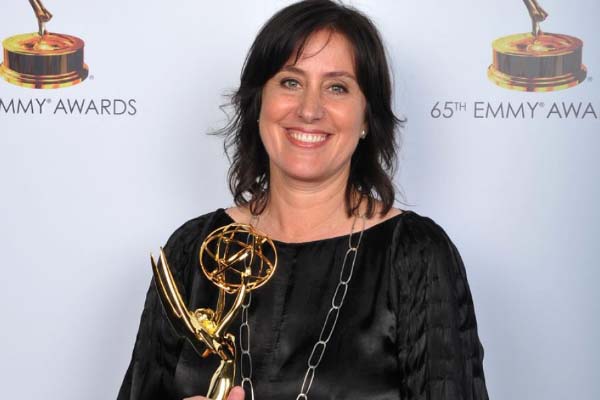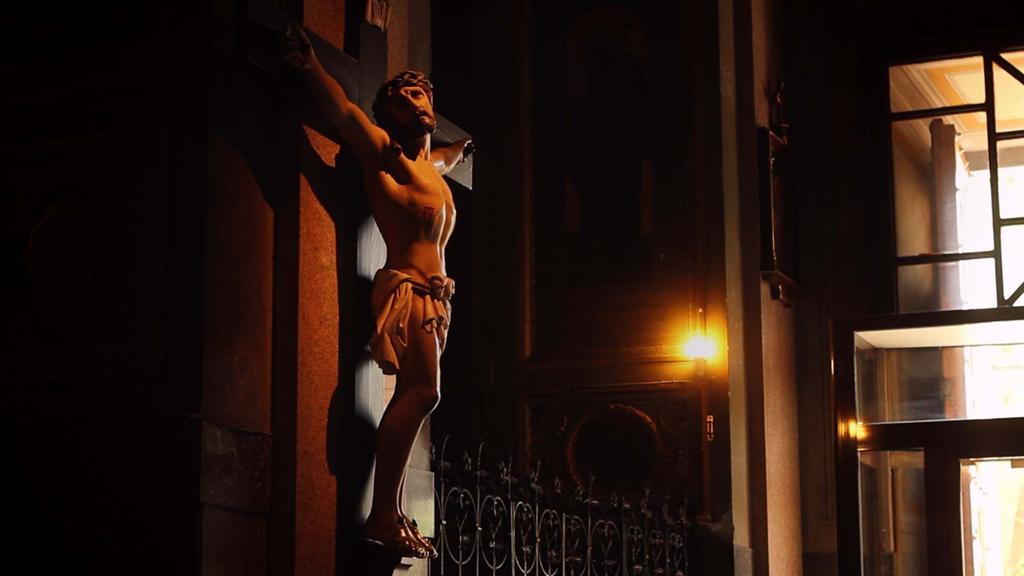Sloane Klevin on ‘the Power of Editing’

In September, when Sloane Klevin, A.C.E., received a Creative Arts Emmy in the “Outstanding Picture Editing For Nonfiction Programming” category for cutting the provocative documentary “Mea Maxima Culpa: Silence In The House Of God,” it was not a gift sent by heaven.
Written and directed by Alex Gibney, and financed and supported by HBO, the film is still so controversial that some in high places feel it should never have been made at all.
Klevin is a multifaceted editor, having worked on both narrative features (2001’s “Real Women Have Curves”) and dark investigative documentaries (2007’s Oscarwinning “Taxi to the Dark Side” and a segment in 2008’s “Freakonomics”). She also maintains an active career cutting commercials as a partner in the bi-coastal Union Editorial company. You may have seen a recent “Stay Extraordinary” Diet Coke commercial with Taylor Swift that she edited. It’s become a big YouTube hit.
“Cutting narrative projects is a lot easier because you have a script,” she said. “With documentaries you have more freedom, but it is also more exhausting. If you create something unique out of 300 hours of footage without a script you feel like you have aged a decade after just a year in the edit bay.”
“Mea Maxima Culpa: Silence In The House Of God,” produced for HBO by Jigsaw Productions in association with Wider Film Projects and Below The Radar Films, reveals the secret crimes of Milwaukee priest Father Lawrence Murphy. Murphy abused more than 200 young men at St. John’s School for the Deaf, making sure to approach only the boys whose parents did not know American Sign Language (ASL) so their sons would find it difficult to express their horror over the violations.
The film’s structure presented Klevin with significant editorial challenges as it depicts the abhorrent abuse dating back to the 1960s, and then follows four of the boys, Terry Kohut, Gary Smith, Arthur Budzinksi and Bob Bolger, in their attempt to get justice from the Catholic hierarchy.
Now grown men, the four heroes eventually garnered enough support to reach out to Pope Benedict to have Father Murphy at least defrocked, if not condemned, but ran into a global conspiracy of silence.
Get the TV Tech Newsletter
The professional video industry's #1 source for news, trends and product and tech information. Sign up below.
“Mea Maxima Culpa” deals with a crime so disgusting it cannot be depicted even on cable TV, and involves victims so shattered that revealing their story had to be handled with delicacy.

The technique that Klevin, who was also co-producer, and writer/director Gibney employed was to interview the men faceon while their hands danced in ASL right in front of the camera. The contrast between the victims’ often-strained facial expressions and the beauty of their expressively flickering hand gestures juxtaposes into an effective visual dichotomy.
Since most of the viewing audience is, in real terms, “deaf” to ASL, the filmmakers used the voices of actors Jamey Sheridan, Chris Cooper, Ethan Hawke and John Slattery to vocalize the victims’ words. Only sequences depicting Bob Bolger directly confronting Father Murphy are subtitled since they involve VHS tape shot years ago when Bolger aggressively challenged the misbegotten priest to commit himself to prison.
Cutting the Gordian Knot of depicting Murphy’s aggressive molestations themselves was confronted by Klevin in the edit bay. We see darkened shots of a man’s feet walking through the boy’s sleeping dormitory unheard, but fearfully seen, by the Deaf students in their bunks as Murphy chooses his victims.
“All of the boys’ recollections were similar, so we realized there could be a way to edit that scene to make it one master story,” Klevin describes. “What really gave Alex Gibney the key imagery was that everyone kept saying the haunting experience was illuminated by the ghoulish red light of the room’s exit sign. It also shone on the crucifix on the wall, which made it look as if Jesus was looking down on the abomination occurring below, helpless to stop it.”
Klevin edited the on-camera interviews in a narrative form, and then inserted the dark re-enactments of their indelible memories.
“When the survivors saw this sequence, they all said it caught the impact of the molestation as if they were reliving it again,” she said. “I can’t say this sequence was unscripted because we never had a script at all. But the way Alex and I work is that he has a broad structure in his head, and in the course of long discussions we work out the highlights and their connections. That’s why his company is called Jigsaw Productions since we put the final whole together out of multiple pieces, and this process lets me experiment extensively with the power of editing.”
There is one edit Klevin crafted at about 25:50 into the movie during which a former Benedictine monk, Patrick J. Wall, has been recruited by the Vatican to “deal with” the growing problem of sexually molesting clergy. Wall was frustrated by the Vatican’s policy of just moving offending priests to new positions or buying them off with a confidentiality order in exchange for up to $250,000 dollars. In 1995 he had a budget of $7 million to keep things quiet.
“Most people don’t want to have anything go public,” Wall said directly into the camera in close up. “I mean, in the Catholic mind set, you don’t sue the church.”
Klevin’s editing instinct was to emphasize that last line, so she cut to the side close-up of Wall as he says that final phrase. An editor’s eye will note she cut to the side shot just as Wall’s hands come up to his face in desperation. Cutting on that motion punctuates his statement—and makes a powerful connection between this speaking person’s passion and the manual expressiveness of ASL communicators.
It could be that Archbishop Weakland— another clergyman who tried to resolve the problems, but who himself had a background of sexual scandal—best encapsulated the still unsolved dilemma facing the Holy See, which speaks for the whole Roman Catholic Church. “This is who we are,” he said. “We’re a church of imperfect people. Jesus wasn’t afraid of humanity, and we shouldn’t be, either.”
Jay Ankeney is a freelance editor and post-production consultant based in Los Angeles. Write him atJayAnkeney@mac.com.
